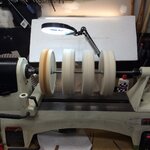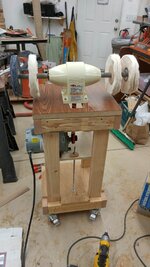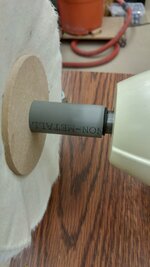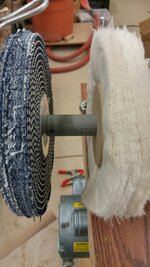For whatever it is worth, each of my stages (Tripoli, WD, 6163, and 6164) are 3 buffs. I only came up with that number because I was trying to approximate the number of plys used by the Beall buffs; they were pretty thick. I am sure 2 or even 1 works, but it is nice to have that width to move the barrels about. They do tighten-up (narrow) considerably when spinning over 1000 rpms.
Separately, according to his video, he uses linen with the Tripoli and linen and cotton flannel with the WD, and all cotton flannel with the carnuba wax). I couldn't find linen buffs 8 inch, with an 1/2 inch hole even though I could have made it work. To emulate the abrasiveness of the linen, I sandwiched the a single canton flannel between two cotton sewn buffs for the tripoli station. I was/am really just experimenting as you can see. I have no idea if what I did emulates the cotton linen. The Caswell tech said that the sewn cotton wheels are used with tripoli....but remember these guys are really more into metal polishing. My stuff arrived in about 4 days.
Have you though about how you are going to mount the wheel? I made a wooden 2MT with 1/2 inch female thread in the center about 3/4 inch deep. Then I used gorilla glue epoxy to glue in the 1/2 inch all thread. I was hoping a craftsman like Rick H would make a 2MT with 1/2 inch female thread.
Anyway, enjoy!





